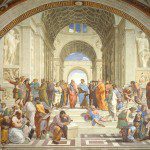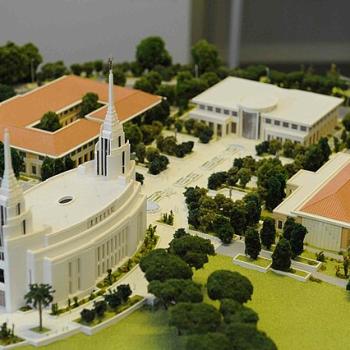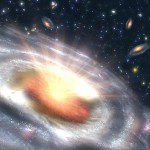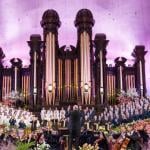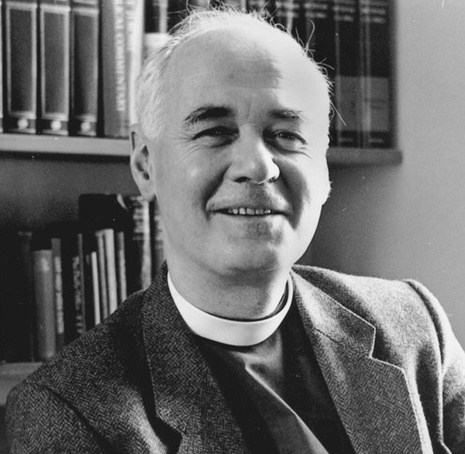
(Wikimedia Commons public domain image)
Despite our very considerable differences (which is putting them mildly), I was saddened to learn just now of the death of M. Gerald Bradford, the former director of the Neal A. Maxwell Institute for Religious Scholarship who initiated and presided over its dramatic change of direction in 2012 and led it thereafter until 2015. Jerry had been in very poor health and evidently suffered a fall down the stairs at home.
***
Among the very most valuable of thinkers on science and religion — unlike many writers, especially perhaps unlike many anti-religious ones, he actually knows a great deal about both — is Sir John Polkinghorne, now in his ninetieth year, who is both a Knight of the British Empire (KBE) and a Fellow of the prestigious Royal Society. He was a professor of mathematical physics at the University of Cambridge until he resigned his professorial chair in order to study for the Anglican priesthood. He was ordained a priest in 1982 and, thereafter, served as the president of Queens’ College, Cambridge, from 1988 until 1996.
Here is a passage from the text of Professor Polkinghorne’s 1996 Terry Lectures, which he delivered at Yale University and which were published as John Polkinghorne, Belief in God in an Age of Science (New Haven and London: Yale University Press, 1998):
Although science presents its arguments and conclusions in the guise of an objective discourse, its method is, in fact, more subtle and dependent upon acts of personal evaluation. We have already noted that the search for beautiful equations lies at the heart of the success of fundamental physics. The recognition of mathematical beauty resembles other forms of aesthetic experience in that it is hard to describe but, for those endowed with seeing eyes, there is an unmistakable authenticity to it. It involves an acknowledgment of value which must be made by persons and which cannot be reduced to the successful completion of an algorithmic check-list. Yet the long-term fruitfulness of discoveries made in this way, yielding understanding of phenomena far wider than those considered in the original investigation, makes it clear that what is involved here is not the private satisfaction of the aesthetic tastes of a mathematical coterie, but the opening of a window into the reality of the structure of the physical world. Here is the first of a number of signs we must consider which indicate that encounter with value is fundamental to an adequate apprehension of the world in which we live.
It is precisely the recognition of the qualities of elegance, economy and naturalness which solves the problem of the underdetermination of theory by experiment, so often pressed by philosophers of science, who sometimes speak of the process of discovery as if it were a dull routine of fitting curves to data points. From the point of view of the working scientist, whose thought is consciously or unconsciously controlled by the canons of scientific value, the problem is exactly the reverse — not of selecting from a plethora of possible explanations but of finding one which is adequate to a large swathe of experimental knowledge and which possesses the form of a good scientific theory. Whatever they may write in the formal prose of their published papers, you will find that physicists appeal all the time to value, according belief to an elegant insight long before its experimental verification is completed, and saying of an ugly and contrived idea, “That can’t be right.” I do not say that such judgments are invariably correct, but they prove to be so to a degree which makes it clear, contrary to the popular presentation, that science is a value-laden activity. (16-17)



